Quick re-cap: Our School has a culture of staff learning where everyone is part of a learning team that meets 6-8 times per year in meeting slots or on teacher only days. The Learning Teams are facilitated by staff that step up to do so and all have a requirement to be focused on a reflective teaching cycle (Teaching as Inquiry). Our school has SOLO as a shared framework for learning, and as a deliberate act, any new staff to the school are put into the SOLO learning team.
Our School uses the SCT(Specialist Classroom Teacher) roles for two of these learning teams (plus other jobs the teaching and learning committee thinks up). Anyway, I am on leave and there was a new person in the “SOLO” role this year. However, I was lucky enough to be able to run the first SOLO learning team at the start of the year (I have reflected upon that somewhere on this blog already). I was not required for the second Learning Team meeting but with some internal movements, I was back to facilitate the third team meeting yesterday and am tasked with the remainder as the new SCT grows into the role. I am quite likely mentoring myself out of a job for next year but it’s too soon to worry about that.
Anyway, I thought I would capture my thinking on yesterdays session.
As I have mentioned before, we have known of SOLO for several years now and while different departments are at different places with SOLO, there is now a large body of templates and exemplars in use. What has become apparent to me is that some have forgotten the “why” of SOLO and how it can be applied to anything if we are mindful of it. Or, they are picking up and using templates that have no real meaning to them beyond it being a learning activity attached to a lesson plan within a unit of work. When I first blogged about this, it was a frustration/concern shared by other schools too. So, one of my goals yesterday was to enable our team to reconnect with the Why of SOLO and how we can see SOLO in whatever we do.
To start, we spent the first 8 or so minutes reflecting upon terms 1 & 2 and completing an “improving teaching cycle” diagram. For those that may not see the value of “Teaching as Inquiry”, the saleable rationale is that this is needed for your attestation. I was time conscious so we did not share these but maybe next time. (Idea to remember, these could be used for a staffroom notice board display – celebrate the learning?????)
Then I Launched in to making links between John Hattie’s research and the why of SOLO. (I acquired these slides back in 2008 at a presentation he gave in CHCH but they essentially come from his book “Visible Learning”)
We went through his ranked order list of the influence that different strategies have on raising achievement. My goal was to show that SOLO can attend to many of the top influences as can be seen below.
Then a couple of quotes that also come from his book.
That was the knowledge input bit and rationale for the why of SOLO. Next I wanted to start connecting with what this looks like for us. The slide below is it in it’s simplest form.
Before moving on, I wanted to debunk the myth that SOLO is just filling in boxes so I told the story I blogged about here http://wp.me/p2WwXN-3K.
To further add to this we did the following activity in groups.
This is what a couple of groups came up with. What is missing is the conversations that the staff had to justify their thinking so some of the coding might seem wrong but it got them being self critical which was the goal.
I followed this up with a worked example I had from a relief lesson where the students were tasked to “make notes” (multistructural). I added that for the notes under each heading (it was about sub cultures – very interesting) they were to annotated the most significant thing and say why (relational). For the high flyers, they might imagine if something was changed and how that might influence the sub-culture (extended abstract). Anyway, the moral of the story is that we can SOLOise anything. I then gave them something to try which I thought up and then thought it might be a naff idea but thought I would share it anyway. (explained below)
I don’t have my own class to try this with so if anyone has a go I would be keen to hear about it. Then I re-caped some ideas and with 30min left in the session, it was their time to plan or explore a SOLO idea for a lesson that is coming up while I made myself available to help. We finished by reflecting on what we had done, setting expectations for trialling something and identifying possible areas of need for the next meeting.
For the next session I think we will link back to the HOT maps. In particular, the ones that attend to Explain, Analyse and Evaluate. The reason being, that I think we often ask this of our students but fail to scaffold or make visible strategies for success.


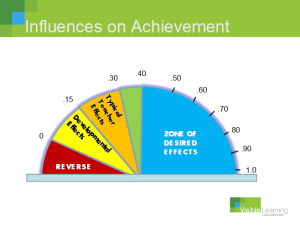
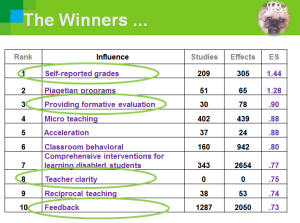
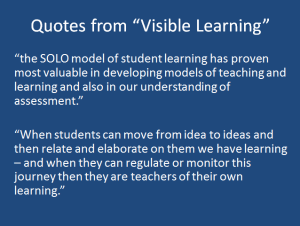
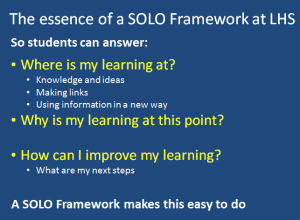
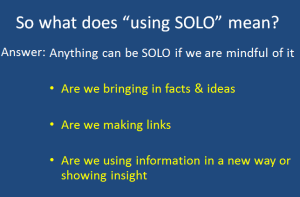
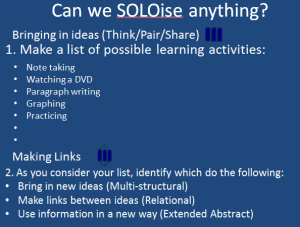
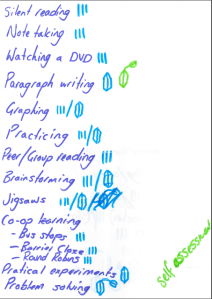
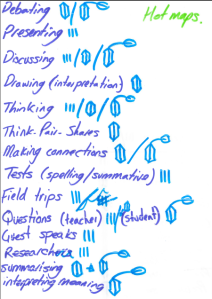
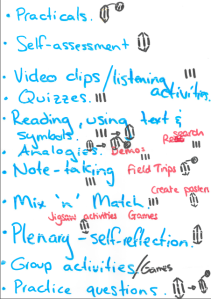
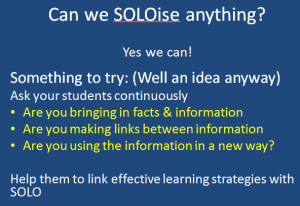

Great stuff Craig. What a long way Lincoln has come!
Just had a very similar discussion with my head of education – about where to for our staff in SOLO! Good stuff to get us thinking!